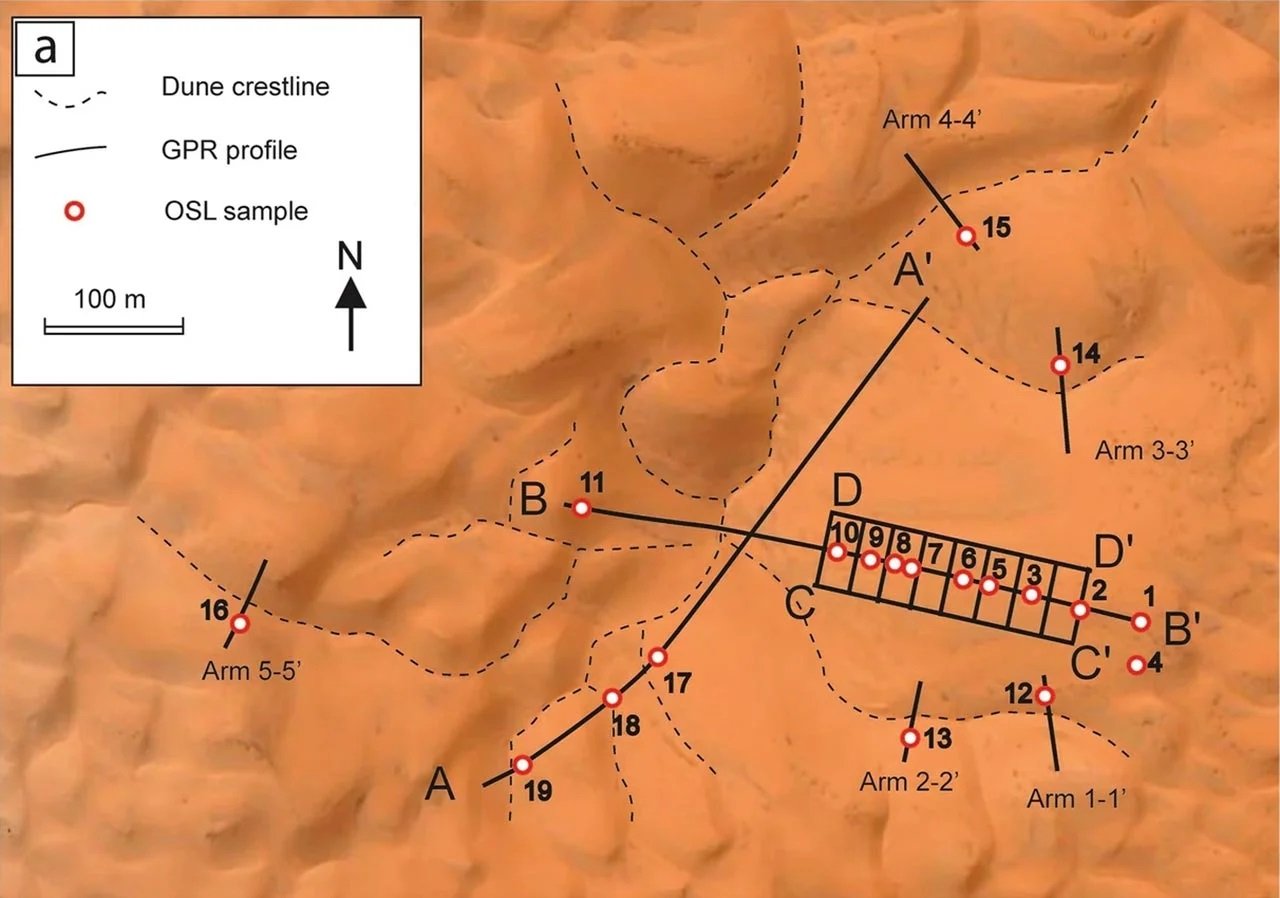Scientists have unraveled a 13,000-year-old mystery surrounding the formation of star dunes, the towering and complex sand structures found in deserts around the globe. A new study focusing on a Moroccan star dune has challenged long-held assumptions about their age and development, shedding light on Earth’s ancient climates.
Star dunes, with their distinctive arms radiating from a central peak, are visually stunning. However, their near-absence in the geological record has puzzled scientists. Prior to this study, it was believed that these massive dunes took hundreds of thousands of years to form. The new research, published in the journal Scientific Reports, reveals a much more dynamic process.
An international team of researchers, including scientists from Aberystwyth University, Birkbeck, and UCL, analyzed a star dune in southeast Morocco called Lala Lallia. Using ground-penetrating radar and dating techniques, they determined the dune’s foundation formed around 13,000 years ago. This coincides with a period of abrupt climate change known as the Younger Dryas, suggesting a link between climatic shifts and star dune formation.

Surprisingly, the study also found that the Lala Lallia dune stopped growing for an extensive period of around 8,000 years. This challenges previous assumptions about their continuous development and indicates that star dune formation processes may be more complex than initially thought.
“Star dunes are some of the most beautiful landforms on Earth, and their formation has fascinated scientists for years,” remarked Dr. Geoff Duller, lead author of the study from Aberystwyth University. “This research helps us understand the complex interactions of wind, sand, and climate that shape these spectacular desert landscapes.”
By deciphering the dune’s internal structure, scientists gained valuable insights into the dune’s development over time. This knowledge will help geologists identify other remnants of ancient star dunes preserved as sandstone in the geological record, potentially unlocking further secrets about past climates and environments.
This breakthrough discovery highlights the ever-evolving nature of our understanding of geological processes and the Earth’s dynamic history. It emphasizes the importance of continued research in uncovering the mysteries held within our planet’s ancient landscapes.


















